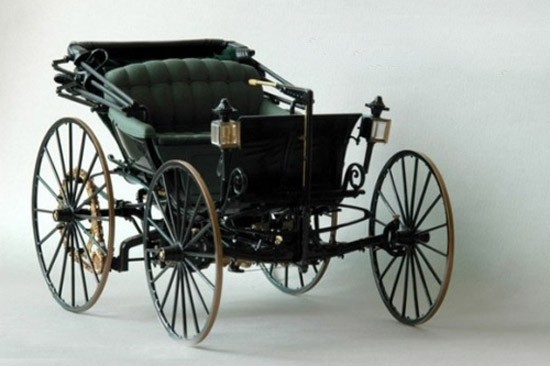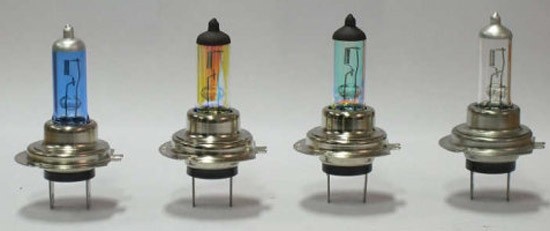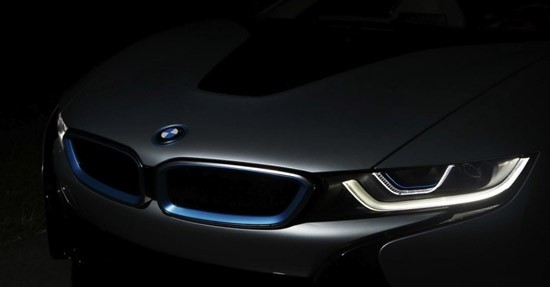【Owner's home car knowledge】If you want to ask what electrical appliance is the most important in a car, there is no doubt that the lights are absolutely second to none. Without car headlights, we would have difficulty driving a car at night, but with high-quality light sources, our roads at night will be more secure, so the pursuit of better light sources has become the common goal of car owners and manufacturers. From gas lamps to electric lamps, from light bulbs to LEDs, to laser headlights, they have been used for lighting only at the beginning, and now they are used for various purposes such as night vision and decoration. In this article, let's talk about the development process of car headlights.
Kerosene lamp:1886-1904
When the car was first born, it had almost no functions, let alone headlights. It is said that in 1887, when a driver lost his way in the dark wilderness, it was a family of civilians who led him home with a lantern. This is also known as the earliest lighting tool on the car.
However, the luminous intensity of the kerosene lamp is too low to meet the requirement of illuminating the road far enough in front of the car. Therefore, in order to improve the illumination of the road ahead, people adopted the method of placing the Krupin reflector behind the kerosene lamp, making the kerosene lamp the world's first spotlight headlight, which is also the earliest prototype of car lights.
Acetylene lamp:1905-1925
However, due to the low luminous efficiency, kerosene lamps were quickly replaced by acetylene lamps. Some people may question that the incandescent lamp was invented as early as 1879. Why did the acetylene lamp be first used in the car? This is because the filament of the vacuum incandescent bulb at that time was made of carbon filament, which was too fragile to withstand the road. The bumps cannot be applied to the headlights. And at that time, the brightness that acetylene lamps could achieve was almost twice as bright as that of electric lamps, so acetylene lamps became the first choice for car lights at that time. After that, other high-level light sources also appeared, but they were all unsuccessful for various reasons. In the end, only acetylene lamps became the stable light source for early car lights, and they were used until around 1925.
Of course, with the development of automobiles, the shortcomings of acetylene lamps have gradually been exposed. First of all, acetylene lamps rely on burning to emit light, and are easily extinguished by rain on the road. Driving in bad weather has become a nightmare for drivers. Secondly, the durability of acetylene lamps is not much stronger than that of incandescent lamps that have just been released. In addition, the burned acetylene will produce a large amount of soda lime (Ca(OH)2), which is a harmful substance that can dissolve proteins. It will produce strong irritation and corrosion on the skin, and in severe cases, it will cause shock, gastric perforation and other adverse reactions.
-----------------------------
Working principle of acetylene lamp:
Acetylene is produced by the chemical reaction of calcium carbide and water using a portable acetylene generator installed on the pedal or frame of the car. In the process of driving, the shaking body just provides convenient conditions for the production of acetylene, but the disadvantage is that once you stop the car, the reaction is not so strong, and the lights will gradually dim as the production of acetylene decreases. .
-----------------------------
Incandescent lamps, halogen lamps:
Therefore, with the development of electric lamps and the improvement of durability, acetylene lamps have gradually withdrawn from the stage of car lamp history along with their shortcomings. It was replaced by increasingly mature incandescent lamps. Compared with the original carbon filament incandescent lamp, the irradiation intensity of the spiral tungsten filament incandescent lamp has increased by 50%. The emergence of spiral tungsten filament incandescent lamps can be said to have really started the history of the electrification of automotive lighting. The previous kerosene lamps and acetylene can be regarded as unofficial history.
Although as early as 1898, Columbia Electric Company launched an electric car equipped with tungsten lamps. But as mentioned above, the slender filament is easy to break on the bumpy road, and there is no focusing device, the first show of the electric light is not a success, which is why the acetylene lamp can be used until 1925. The reason.
However, the luminous efficiency of ordinary incandescent lamps is not high, so more energy-saving halogen lamps were born. The initial halogen lamps used for car lights were born in the 1960s, and the manufacturer was later the famous Hella.
--------------------------------------
What is Halogen Lamp:
Halogen lamps are actually an upgraded version of incandescent lamps that we use in our daily life. The application of halogen elements can increase the brightness of incandescent lamps by 1.5 times, and the service life is 2-3 times that of ordinary incandescent lamps. In order to improve the luminous efficiency of incandescent lamps, first of all, the temperature of the tungsten wire must be increased, but correspondingly, it will cause the sublimation of tungsten, and condense on the glass shell to make it black. The incandescent lamp is filled with halogen elements or halides, and the blackening phenomenon of the glass bulb of the incandescent lamp can be eliminated by using the principle of the halogen-tungsten cycle, which is the origin of the halogen lamp.
--------------------------------------
Xenon headlights:
With the change of traffic environment and the improvement of automobile safety and environmental protection, incandescent lamps can no longer meet the needs. First of all, the brightness of incandescent lamp series is not enough. Due to the faster and faster speed of vehicles, the insufficient brightness directly affects Vehicle and pedestrian safety. Secondly, it is not environmentally friendly. The power of a halogen car light reaches 50W~70W, and the energy consumption is relatively large, and because the light of an incandescent lamp is based on the tungsten wire, the high temperature of the tungsten wire will inevitably cause loss, although 200~300 hours The lifespan is much better than that of fuel lamps, but compared with the overall lifespan of the car, the lifespan of the incandescent lamp series is still too short.
Aiming at the low brightness, power consumption and short life of the incandescent lamp series, in the 1990s, Hella, a professional car lamp manufacturer, introduced the mature technology of xenon lamps to the market. The xenon lamp breaks the tungsten light emitting principle invented by Edison, and fills the quartz lamp tube with high-pressure inert gas to replace the traditional filament, and stimulates the xenon to emit light with a high-voltage current of 23,000 volts, forming a perfect white arc between the two poles. Xenon lamps are three times brighter than halogen lamps, consume half as much energy, and have a service life seven times longer than halogen lamps. Simply put, as long as there is no man-made damage, there is no need to change the lights within the service life of the vehicle for more than ten years.
However, the first application of xenon headlights will cause glare to the driver on the opposite side, which is a hidden danger to safety. Later, automatic headlight height adjustment began to be applied, which solved this problem.
LED headlights:
After xenon headlights, there are LED headlights that are not yet popular. Although they can be seen on many concept cars before, due to the relationship between technology, cost and regulations, LED headlights have only been installed in recent years. matter.
Laser headlight:
Laser headlights are called the "reasonable next step" after LED headlights. The principle is that the blue light of laser light-emitting diodes will pass through the fluorescent phosphor material in the headlight unit, converting it into a diffused white light. It is more energy-efficient and more fuel-efficient.
Summarize:As an important automobile technology, the history of car lights is almost synchronized with that of cars. Not only have various technological breakthroughs, but also are closely related to car design. With the advancement of technology, the story of car lights will continue.













 Email:
Email: